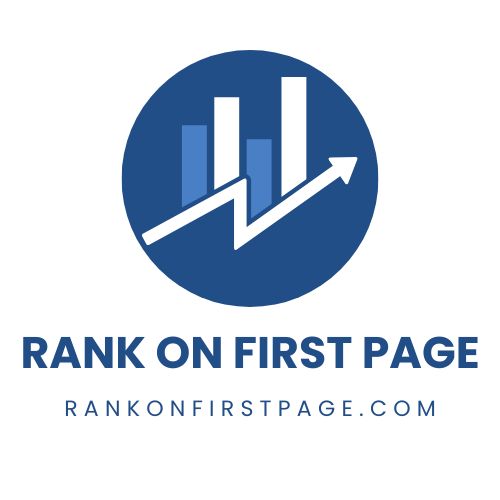Product-led SEO is a strategic approach to search engine optimization that places products at the center of your SEO efforts. Rather than focusing primarily on blog content or generic keyword targeting, product-led SEO directly optimizes product pages and categories to drive qualified traffic and conversions.
What Is Product-Led SEO?
Product-led SEO is an approach that prioritizes optimizing product pages and product-related content to rank in search engines. This strategy acknowledges that for e-commerce and SaaS businesses, products are the primary conversion drivers. By focusing SEO efforts on product pages, you can:
- Attract users with high purchase intent
- Reduce the steps between search and purchase
- Create a more direct path to revenue
- Build organic visibility for your core offerings
Unlike content-led SEO, which often focuses on top-of-funnel blog posts, product-led SEO targets middle and bottom-of-funnel searches where users are actively looking for solutions your products provide.
The Power of Category Page SEO
Category pages act as crucial hubs in your product-led SEO strategy. They serve several important functions:
- Targeting Broad Commercial Keywords: Category pages are ideal for ranking for higher-volume product category terms (e.g., “men’s running shoes” or “wireless headphones”).
- Creating Topical Authority: Well-structured category pages help search engines understand your site’s relevance for specific product types.
- Improving Internal Linking: Category pages create logical pathways for both users and search engines to discover your individual product pages.
- Reducing Cannibalization: Proper category structure prevents your product pages from competing against each other for the same keywords.
Category Page Optimization Best Practices
To maximize the SEO value of category pages:
- Use Descriptive Category Names: Incorporate primary keywords directly in category titles.
- Write Unique Category Descriptions: Include 250-300 words of unique content that describes the category and its benefits.
- Implement Faceted Navigation: Allow users to filter products while maintaining SEO-friendly URL structures.
- Create Logical Hierarchies: Build parent-child relationships between categories (e.g., Electronics > Headphones > Wireless Headphones).
- Add Schema Markup: Implement ItemList schema to help search engines understand category relationships.
Product Page SEO: The Foundation of Product-Led SEO
While category pages target broader terms, product pages should be optimized for specific product searches with high purchase intent.
Key Product Page SEO Elements:
- Product Titles: Include the product name, key features, and model numbers.
- Unique Product Descriptions: Write compelling, informative descriptions that incorporate relevant keywords naturally.
- Technical Specifications: List detailed specifications in a structured format.
- High-Quality Images: Use descriptive filenames and alt text.
- Product Schema Markup: Implement Product schema to enhance search appearance with price, availability, and ratings.
- Customer Reviews: Encourage and display authentic customer reviews.
Real-World Results: Product-Led SEO in Action
Case Study: Wayfair’s Category Page Strategy
Wayfair has built one of the most successful e-commerce SEO strategies by focusing on category optimization:
- They create dedicated category pages for specific product types, like “Blue Velvet Sofas” or “Farmhouse Coffee Tables”
- Their category pages feature unique, informative content that addresses specific customer questions
- They implement advanced filtering options while maintaining SEO-friendly URLs
Results: According to SEMrush data, Wayfair ranks for over 10.2 million organic keywords, with category pages driving approximately 68% of their organic traffic.
Case Study: Best Buy’s Product Page Optimization
Best Buy demonstrates effective product-led SEO with pages that:
- Include detailed, unique product descriptions for each item (even those with manufacturer descriptions)
- Feature comprehensive technical specifications in structured formats
- Incorporate customer Q&A sections that address common queries
- Use product schema markup to enhance SERP visibility
Results: Analysis shows Best Buy’s product pages have an average time-on-page of 4:32 minutes compared to 2:17 minutes for their blog content, indicating higher user engagement on optimized product pages.
Implementing Product-Led SEO: Step-by-Step
- Conduct Product Keyword Research: Identify specific terms customers use when searching for your products.
- Analyze Search Intent: Determine if searches are navigational, informational, or transactional.
- Map Keywords to Product Hierarchy: Assign broader terms to categories and specific terms to products.
- Optimize Category Structure: Create logical category hierarchies that match search patterns.
- Create Unique Product Content: Develop detailed, unique descriptions for all products.
- Implement Technical SEO: Ensure proper schema markup, internal linking, and URL structure.
- Monitor Performance: Track product and category page metrics, including organic traffic, conversions, and rankings.
Frequently Asked Questions
How to Write SEO-Friendly Product Descriptions?
To create SEO-friendly product descriptions:
- Research Relevant Keywords: Identify specific terms customers use when searching for this type of product.
- Focus on Benefits: Describe how the product solves customer problems.
- Include Technical Details: Incorporate specifications, dimensions, materials, etc.
- Write Unique Content: Avoid using manufacturer descriptions verbatim.
- Use Natural Language: Weave keywords in naturally without keyword stuffing.
- Include Sensory Words: Describe how the product looks, feels, sounds, etc.
- Format for Readability: Use bullet points, short paragraphs, and subheadings.
How Long Should a Product Description Be for SEO?
The ideal length for product descriptions varies by industry and product complexity:
- Simple Products: 250-400 words is typically sufficient
- Complex Products: 500-1,000+ words may be necessary
- Technical Products: Up to 1,500 words with detailed specifications
According to a 2023 study by Searchmetrics, product pages ranking in the top 3 positions for competitive terms averaged 741 words of unique content, combining product descriptions, specifications, and user-generated content.
The key is quality over quantity—ensure descriptions are comprehensive, address customer questions, and contain relevant keywords rather than focusing solely on word count.
What’s the Difference Between Content-Led and Product-Led SEO?
Content-led SEO primarily focuses on creating blog posts, guides, and informational content to attract traffic, while product-led SEO prioritizes optimizing product and category pages for direct conversions.
Content-led approaches often target top-of-funnel keywords, while product-led strategies focus on middle and bottom-of-funnel searches with higher purchase intent.
Ideally, a comprehensive SEO strategy incorporates both approaches, using content to build authority and awareness while optimizing product pages to convert that traffic into customers.
